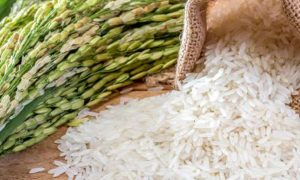Zimbabwe aims to produce 1.4 mln tons of wheat by 2030

Zimbabwe plans to boost wheat output from 640,000 tonnes to 1.4 million tonnes by 2030, aiming to become a net exporter. Production gains will come from expanded irrigation, better agronomy and higher-protein varieties. Local supply will reduce imports, strengthen the value chain and generate up to USD 150 million in annual export revenue.
Zimbabwe aims to increase wheat production from the current 640,000 tonnes to 1.4 million tonnes by 2030, positioning itself as a net exporter of the crop. Achieving self-sufficiency in wheat was a top government priority, reached in 2022. The next step focuses on replacing imports with locally produced wheat products and launching exports to generate foreign currency.
According to the new agricultural strategy AFSRTS 2 (2026–2030), wheat production is projected to rise from 778,000 tonnes in 2026 to 1,388,000 tonnes by 2030, with its gross value increasing from USD 342 million to USD 541 million. The contribution of the wheat value chain to the agricultural sector’s gross value is expected to grow from 3% to 3.4% by 2030.
Currently, the country mainly produces soft wheat and imports about 30% of hard wheat for blending purposes. Some manufacturers already use 100% locally produced wheat for bread. National Foods Limited CEO, Mike Lashbrook, noted that local wheat has good quality and produces whiter flour, but high-protein wheat is still imported to reach the required protein levels.
The government and private sector are actively working to improve wheat quality and productivity. Irrigated areas are expected to expand to 496,000 hectares by 2030, alongside the adoption of Good Agronomic Practices and higher-protein wheat varieties. Since 2019, wheat-growing areas have increased by 412%, and production has surged by 540%, creating significant export potential.
Rising domestic demand for wheat is driven by population growth, urbanization, and changing consumer preferences, necessitating some imports to meet the shortfall. Wheat is mainly consumed in bread, pasta, breakfast cereals, and confectionery, with surplus production providing annual export revenue of USD 100–150 million.
To Read more about Wheat News continue reading Agriinsite.com
Source : Ukr Agro Consult

















